Did you know that Hotel advertising spending escalates each year —competition is fierce!
In the hospitality industry, implementing innovative and successful paid advertising campaigns can significantly boost your hotel’s reputation and help increase bookings.
Rather than sticking to conventional ‘pay-to-display’ methods, it’s time to innovate and reimagine your approach to hotel advertising. This guide will help you transform your hotel’s advertising strategy from mediocre to exceptional, offering a step-by-step plan to maximise your advertising efforts. It’s about time we stopped dumping money down the digital black hole and started advertising successfully.
Mastering the Art of Hotel Advertising
- A guided approach to identify your target audience competently.
- Detailed insights into choosing optimal advertising platforms
- Effective strategies for crafting compelling advertisements to boost ROI.
Identifying your hotel’s target demographic
An essential aspect of successful hotel advertising is focusing on the demographics most likely to be interested in your services. Pinpointing the age, gender, profession, location, and lifestyle of your typical guest is integral to devising a well-targeted campaign. Ask yourself, who primarily comprises your clientele? Business travellers? Couples looking for a romantic getaway? Families seeking a comfortable, kid-friendly environment? Once you ascertain your target demographic, you can tailor your advertising to their needs and desires.
Understanding their needs, preferences, and behaviours
Knowing your audience’s preferences goes beyond demographic identification. It involves delving into understanding their needs, wants, and behaviours. What kind of rooms do they prefer? What services are most utilised? What amenities do they value? Harnessing this knowledge informs your hotel’s advertising campaign decisions and enhances your services.
One effective way to gather this information is by conducting customer surveys. By directly asking your guests about their preferences and behaviours, you can gather valuable insights to inform your strategies and enhance your offerings to serve your target audience better.
Most hotels, whether luxury resorts or budget-friendly hotels, send out a guest feedback form after each visit to learn what the guests enjoyed and whether there was any need for improvement. This is a direct way of gaining valuable information for your hotel’s advertising and marketing strategies.
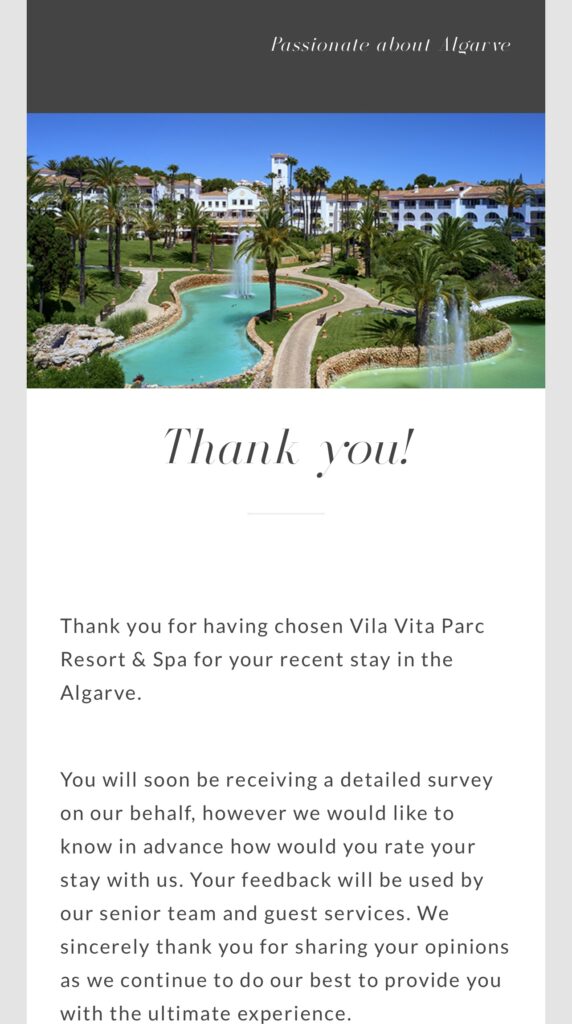
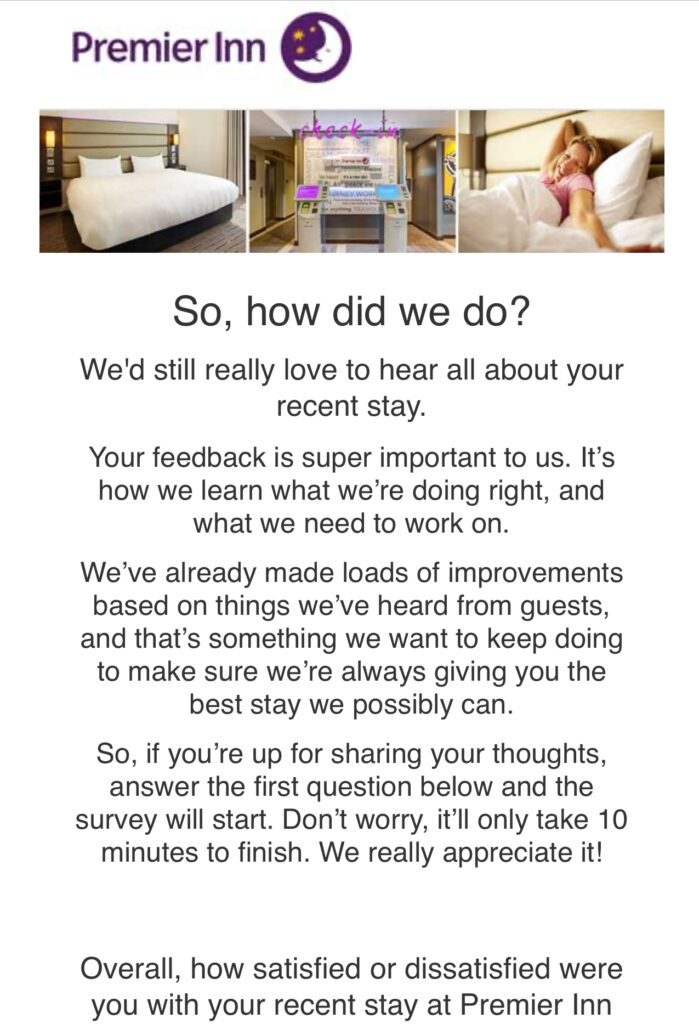
Another effective way to understand your demographic’s behaviours and preferences is by analysing data from various sources. You can collect data from your website analytics, social media insights, booking platforms, and customer reviews. By examining metrics such as website traffic patterns, engagement rates on social media, booking trends, and guest feedback, you can gain valuable insights into what aspects of your hotel are most appealing to your target audience and what areas might need improvement.
You can also utilise customer relationship management (CRM) tools like Monday or Hubspot to track interactions with your guests and better understand their preferences over time.
This data-driven approach allows you to make informed decisions about your hotel advertising strategies, driving better results for your hotel.
Choosing the Right Platforms for Hotel Advertising
There’s a bounty of platforms to choose from, each with pros and cons. These range from search engine marketing platforms like Google Ads to social media platforms like Instagram, Facebook, and LinkedIn. What matters is finding the right fit for your hotel. Here are some platforms to consider:
- Google Ads: Google Ads allows hotels to place targeted advertisements on Google search results pages and across the Google Display Network. Hotels can target potential guests based on keywords, location, interests, and browsing behaviour. Additionally, Google Ads offers various ad formats, including text, display, video, and carousel ads, allowing hotels to showcase their offerings differently.
- Facebook Ads: With its extensive user base and sophisticated targeting options, it is a valuable platform for hotels to promote their properties. Hotels can create highly targeted ads based on demographics, interests, behaviours, and connections. Facebook also offers a range of ad formats, such as image, video, carousel, collection, and story ads, enabling hotels to engage users effectively.
- Instagram Ads: As a visually-driven platform, Instagram is ideal for showcasing hotels’ aesthetics and experiences. Hotels can run ads on Instagram through Meta Ads Manager, leveraging Instagram’s targeting capabilities and formats, including photo ads, video ads, carousel ads, and story ads. Instagram’s integration with Facebook allows hotels to reach a broader audience and maximise their advertising efforts.
- LinkedIn Ads: LinkedIn is a valuable platform for hotels targeting business travellers and professionals. Hotels can use LinkedIn Ads to reach specific audiences based on job title, industry, company size, and professional interests. It offers various ad formats, including sponsored content, message ads, text ads, carousel ads, and video ads, allowing hotels to tailor their messaging to a professional audience and drive bookings for corporate events or business travel.
- Tripadvisor Ads: Tripadvisor offers advertising solutions specifically designed for hotels and other hospitality businesses. Hotels can promote their properties through sponsored placements on Tripadvisor’s search results pages, business listing pages, and relevant travel content. Tripadvisor Ads allow hotels to reach travellers actively researching accommodations, increase their visibility on the platform, and drive direct bookings.
- Online Travel Agencies (OTAs): OTAs like Expedia and Booking.com allow hotels to reach a vast audience of travellers searching for accommodations. Hotels can advertise on these platforms through various promotional programmes, featured listings, and targeted advertising options. OTAs offer hotels access to a global customer base, sophisticated booking technology, and marketing support to increase their bookings and revenue.
Pros and cons different ad platforms
Just as every coin has two sides, advertising platforms have their benefits and drawbacks. Facebook Ads offer a vast reach, but it may not be the best for targeting business travellers. Google Ads promise impressive ROI, but it can be pricey. Weighing the pros and cons of each platform will guide you to the most effective choice for your hotel.
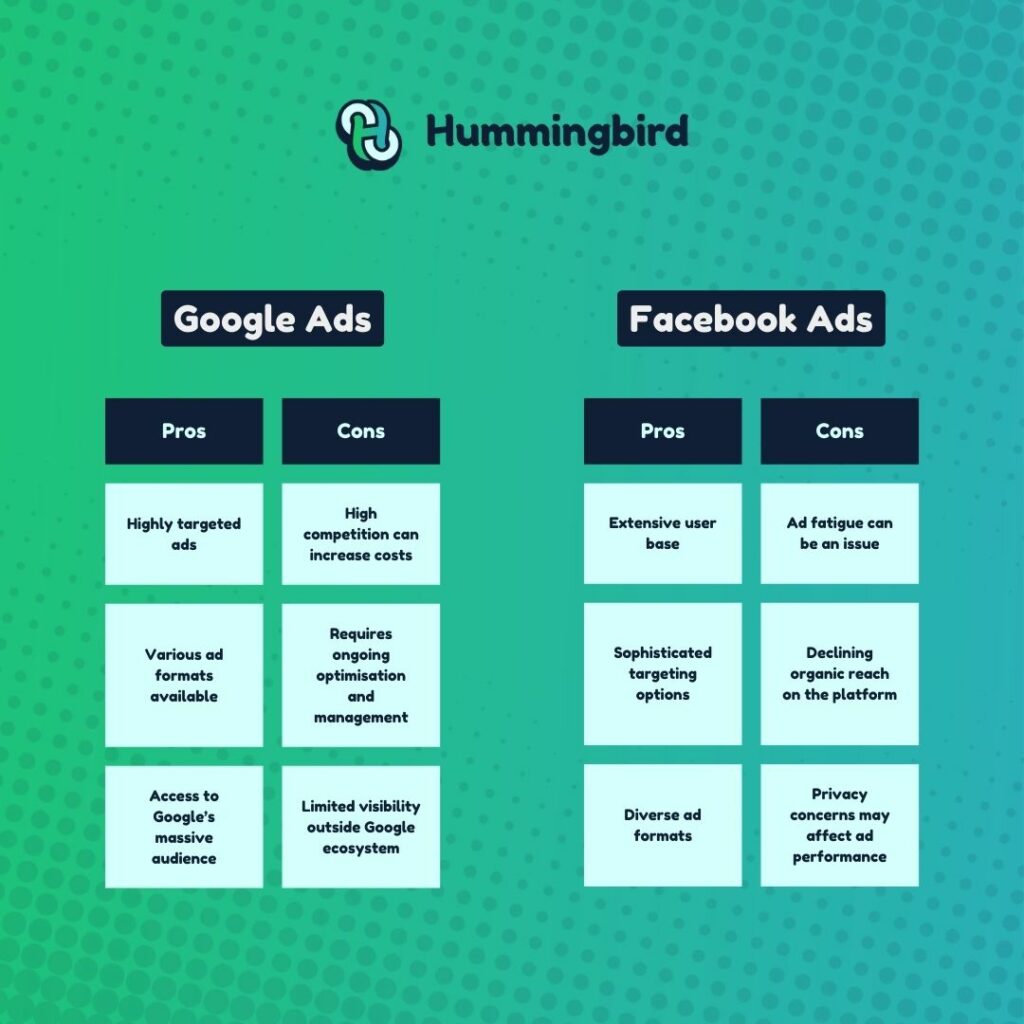
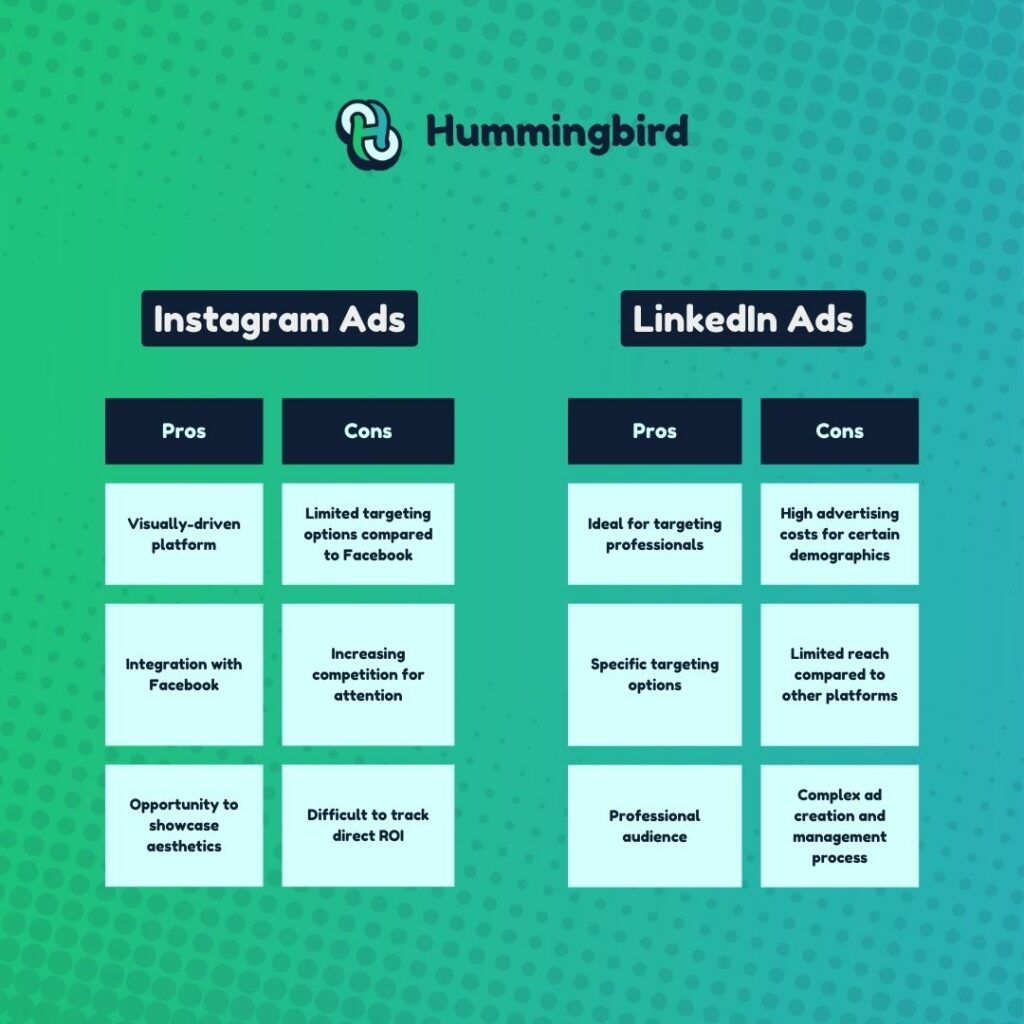
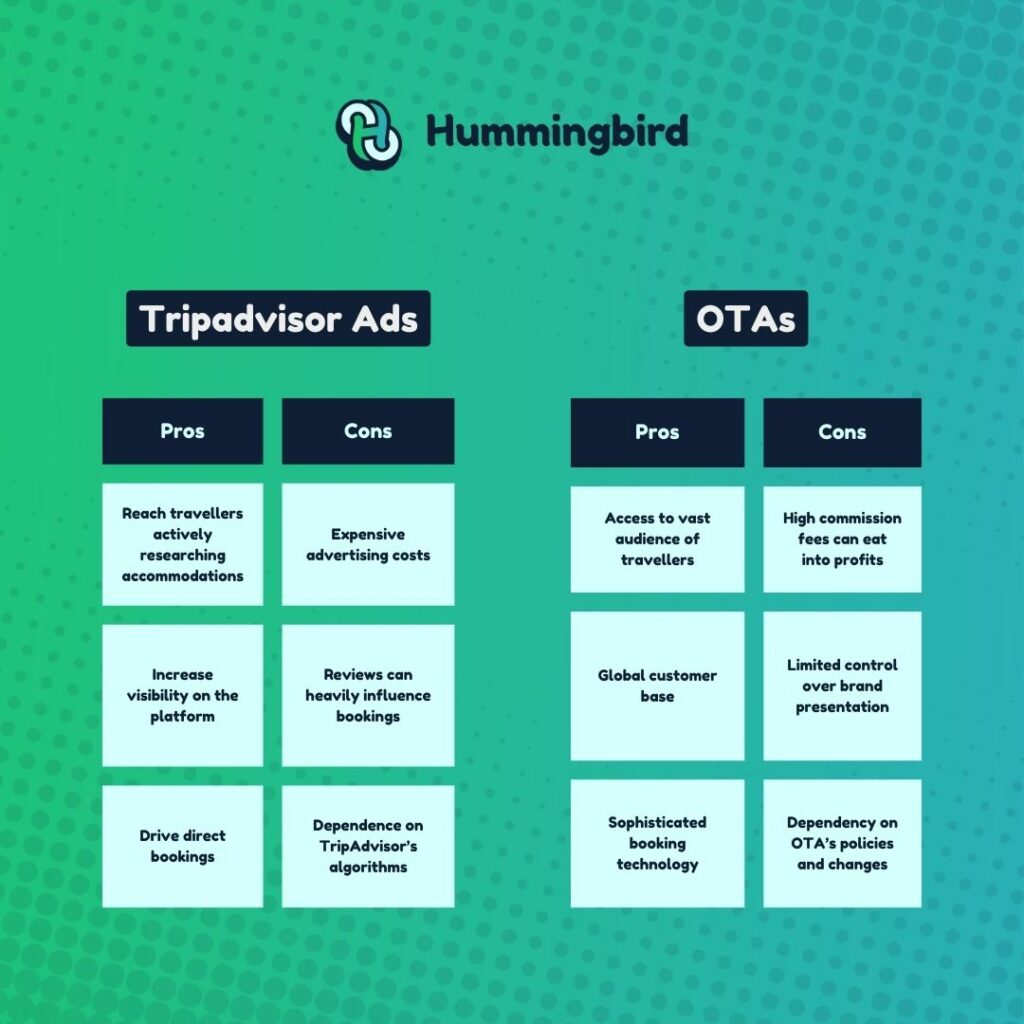
Importance of compelling ad copy and visuals
Captivating ad copy and appealing visuals is the heart of any successful advertisement. The text and visuals need to convey why your hotel is the ideal choice.
Tips for creating engaging ads
Attention-grabbing headlines, clear and persuasive call-to-actions, and high-resolution visuals are just a few elements of a gripping ad. It’s about convincing potential customers that your hotel promises a delightful experience that competes in value and comfort.
Here’s what you need to consider:
- Know Your Audience: Understand your target audience’s demographics, preferences, and pain points. Tailor your message to resonate with their needs and desires.
- Highlight Unique Selling Points (USPs): Whether it’s luxurious amenities, breathtaking views, or exceptional service, emphasise these unique features in your ad.
- Create Attention-Grabbing Headlines: Use catchy headlines that pique curiosity and compel viewers to learn more about your hotel. Highlight benefits or exclusive offers to entice potential guests.
- Compelling Visuals: Use high-quality, professional images and videos that showcase the beauty of your hotel, rooms, amenities, and surroundings. Visual content can evoke emotions and make a strong impression on viewers.
- Clear Call-to-Actions (CTAs): Include clear and persuasive CTAs that prompt viewers to take action, such as booking a room, exploring special offers, or signing up for newsletters. Use action-oriented language to encourage engagement.
- Focus on Benefits: Highlight the benefits and experiences guests can expect at your hotel. Whether it’s relaxation, adventure, or indulgence, emphasise how your hotel can fulfil its desires and exceed expectations.
- Use Social Proof: Incorporate testimonials, reviews, ratings, and awards to build trust and credibility with potential guests. Positive feedback from satisfied guests can reassure others and influence their booking decisions.
- Emphasise Value Proposition: Communicate your hotel’s value proposition, including any discounts, promotions, or exclusive perks offered to guests. Show how staying at your hotel delivers an exceptional experience worth the investment.
Example:
This Facebook ad by Domes Resorts is a good example of a good-quality ad. The hotel brand knows its audience, uses high-quality visuals, uses action-oriented language, has a clear CTA to ‘Book now’, and emphasises the discount clearly within the copy and on the graphic. The copy is concise and compelling, with a sense of urgency for a limited-time deal.
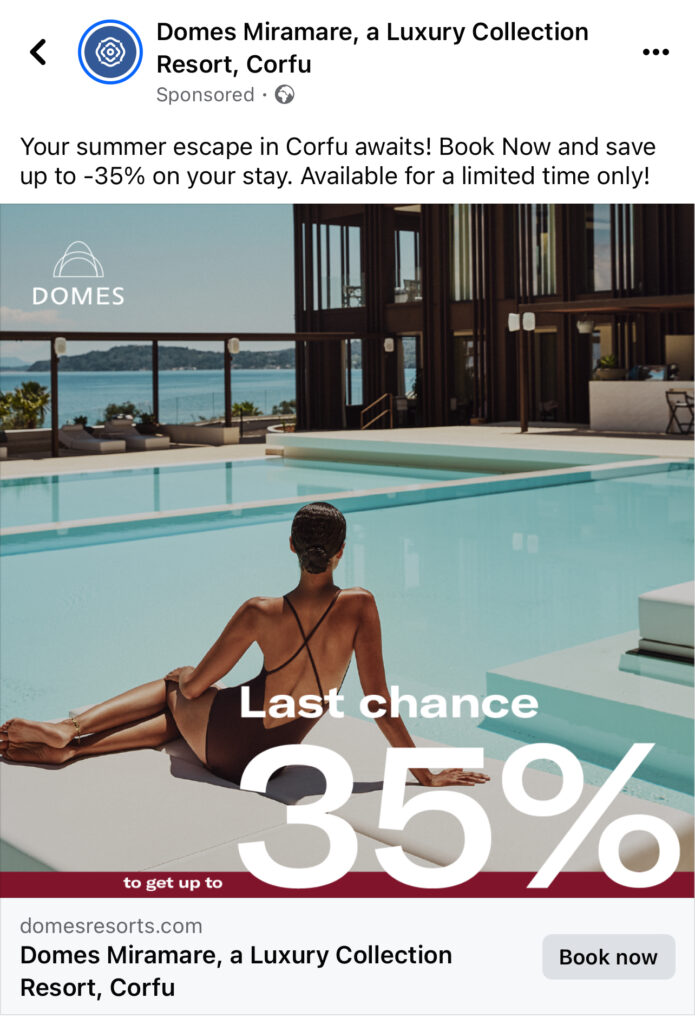
Conclusion
Transforming your hotel advertising strategy from mediocre to exceptional requires a deliberate strategy. Implementing the insights outlined in this guide can improve your efforts and boost bookings.
Key steps include Identifying your target demographic, choosing the right advertising platforms, and crafting compelling ad copy and visuals.
Essentially, success lies in creating ads that capture attention and inspire action. Incorporate attention-grabbing headlines, compelling visuals, and clear calls to action to drive engagement and, most importantly, increase bookings.



